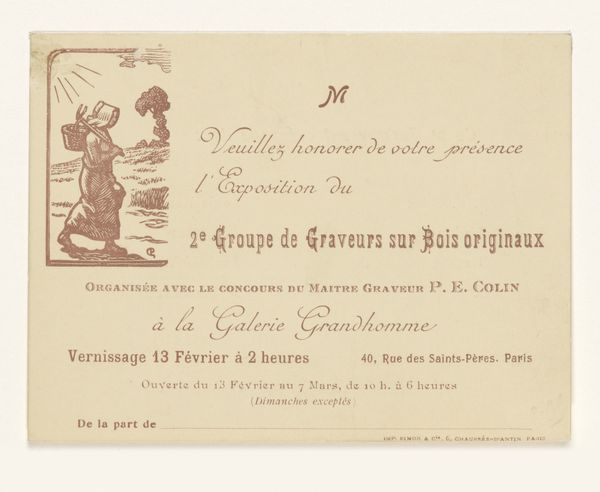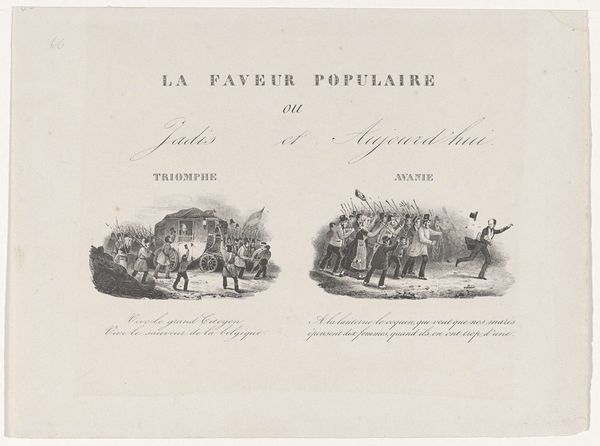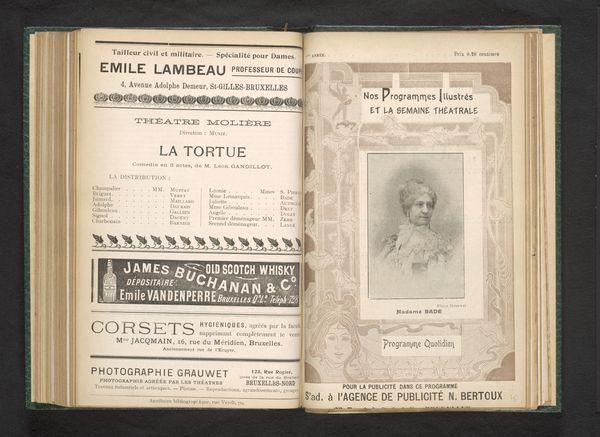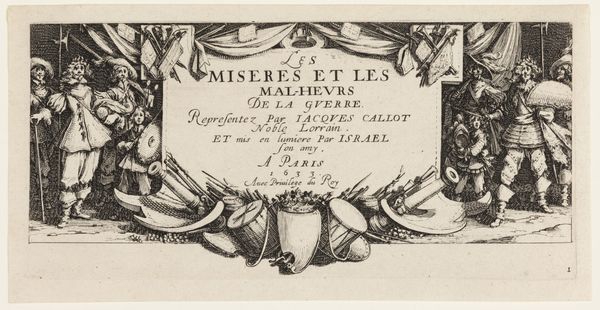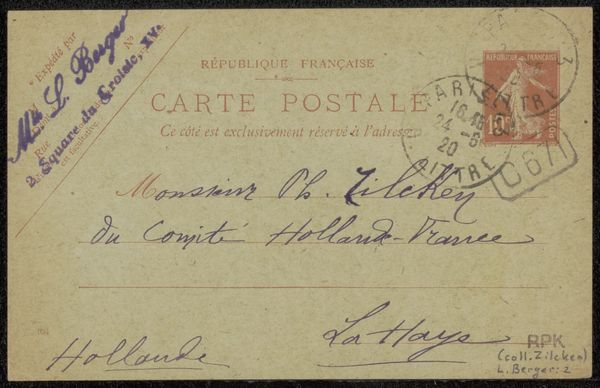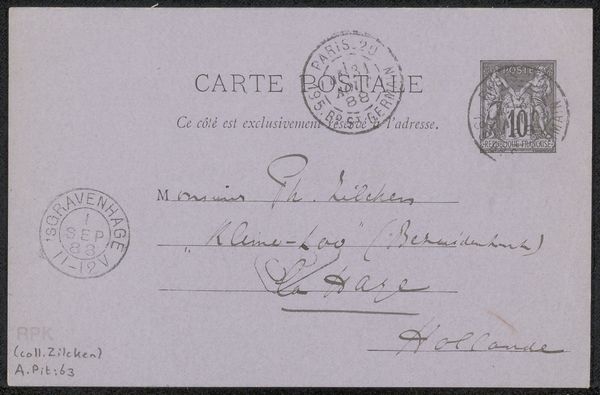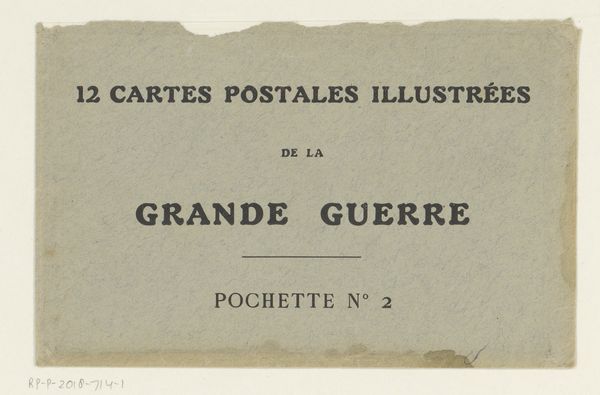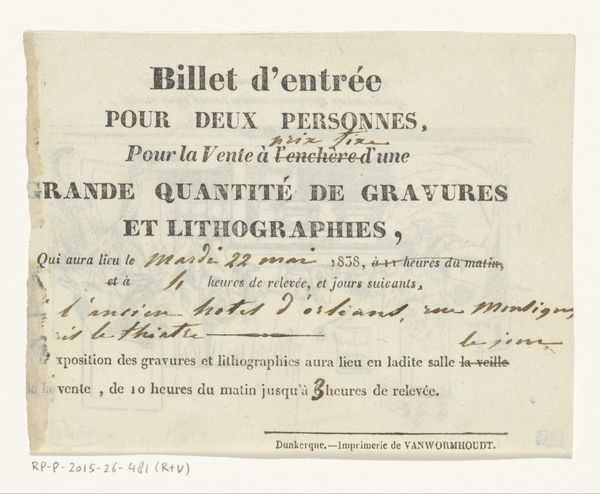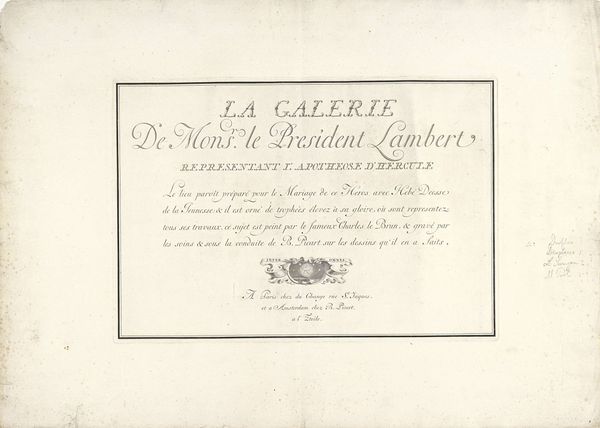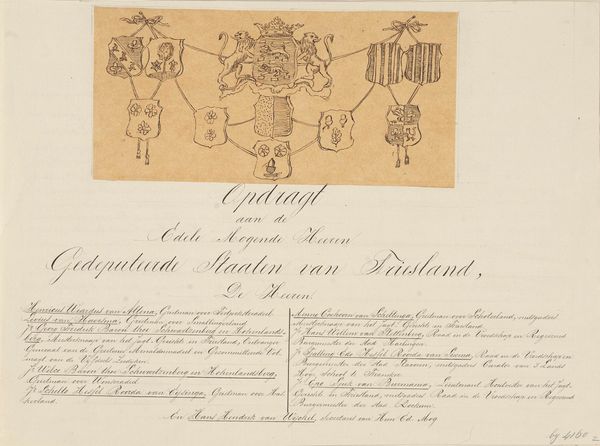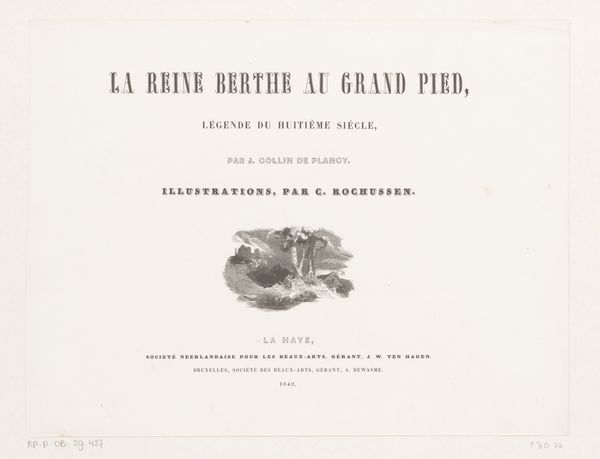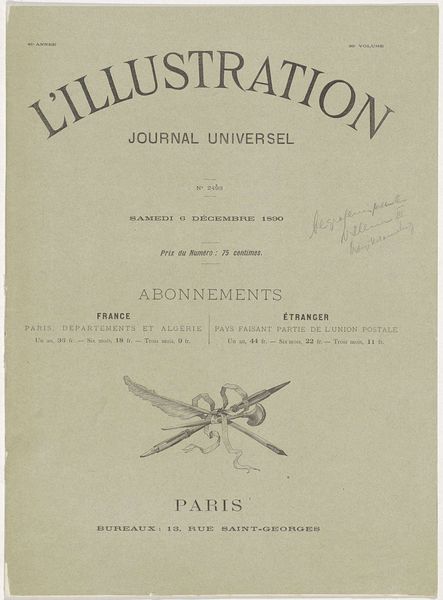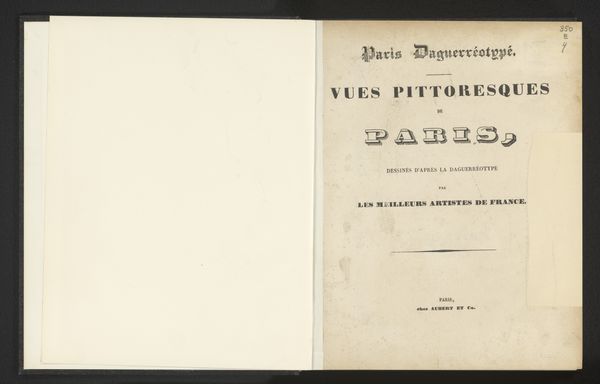
Entreebewijs voor de Exposition de l'Histoire de l'Affiche Illustrée georganiseerd door Galerie Bodinier before 1892
0:00
0:00
graphic-art, print, poster
#
graphic-art
#
old-fashioned
#
aged paper
#
art-nouveau
#
homemade paper
#
pale palette
#
parchment
# print
#
light coloured
#
old engraving style
#
warm-toned
#
symbolism
#
golden font
#
vignette lighting
#
poster
Dimensions: height 103 mm, width 133 mm
Copyright: Rijks Museum: Open Domain
Curator: Look at this remarkable artifact—an entry ticket advertising the "Exposition de l'Histoire de l'Affiche Illustrée" held at the Galerie Bodinier, likely created before 1892. Editor: It's quite strange, actually. The muted colors give it a delicate feel, almost like aged parchment, but then those grotesque mask-like faces clash jarringly with the cherubic figure in the center. What a strange combination of elements. Curator: Precisely! Note the composition, the cherub acts as a bridge between those expressive masks, linking drama and innocence, perhaps. Observe too the Art Nouveau styling, visible in the swirling linework and organic forms, typical for advertisements in that period. Editor: Indeed. Those masks really seize my attention; they resemble ancient theatrical masks, symbols of comedy and tragedy perhaps, yet distorted, unsettling. What do they signify in relation to this history of illustrated posters? Curator: We could consider their symbolism in light of the evolution of poster art, and consider their position alongside this cherubic figure—evoking complex emotions despite a small, seemingly simple format. Their graphic simplicity is intriguing. The texture is achieved, seemingly through engraving, enhancing its symbolic nature. Editor: Right, the layering of symbolism with such minimalist color. Maybe those masks are metaphors for the evolving faces of advertising itself— from pure communication to exaggerated, emotional appeal? The cherub then becomes a timeless emblem for the intended audience, manipulated between marketing techniques. Curator: An astute interpretation! It invites us to analyze the role of visual culture in shaping societal perceptions. And how these archetypal images—cherubs and theatrical masks—transcend their initial context, continuously finding new resonance through changing generations. Editor: So, beyond its formal characteristics as a printed entry ticket, this small piece gives such a surprisingly insightful glimpse into late 19th-century anxieties about artifice, truth, and representation. Curator: Indeed, a potent reminder that even ephemeral objects can be repositories of profound cultural meaning, open to reinterpretation over time.
Comments
No comments
Be the first to comment and join the conversation on the ultimate creative platform.
